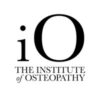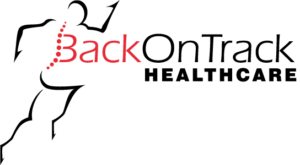
Harry Hovell
- General Osteopathic Council
- The Institute of Osteopathy
If not at back on track you would find me cycling around Richmond Park or planning my next ski holiday.

Harry Hovell
- General Osteopathic Council
- The Institute of Osteopathy
If not at back on track you would find me cycling around Richmond Park or planning my next ski holiday.
Following a rugby injury, Harry was inspired to follow a career combining healthcare and sports performance. He graduated from the British College of Osteopathic Medicine with a Masters degree in Osteopathy and firmly believes that Osteopathy is for everyone.
Harry thrives on helping people from all walks of life. He adopts a preventative style of treatment with focus on improving quality of life; he provides effective self-care advice to complement treatment, helping to restore patients’ movement and reduce pain.
Harry treats a wide range of musculoskeletal conditions and has a special interest in sports and occupational injuries. He has postgraduate training in dry needling and Kinesiology Taping.
Outside of the clinic, Harry is a keen sportsman who plays rugby and enjoys cycling. Additionally, Harry is the Head of Sports Rehabilitation at Old Rutlishians Rugby Club, where he provides support to players of all ages, attending both training and match days to aid well-being and sports injury recovery as well as providing first-aid.
Harry works at our Wimbledon clinic on Monday and Wednesday afternoons/evenings and Saturday mornings.
Consultation Fees
Clinic Times
| Monday | Tuesday | Wednesday | Thursday | Saturday |
|---|---|---|---|---|
|
Harry Hovell Wimbledon
Morning |
Harry Hovell Wimbledon
Morning |
|||
|
Harry Hovell Wimbledon
Afternoon |
Harry Hovell Wimbledon
Afternoon |
Harry Hovell Wimbledon
Afternoon |
||
|
Harry Hovell Wimbledon
Evening |
Harry Hovell Wimbledon
Evening |
|||
| Monday | Tuesday | Wednesday | Thursday | Saturday |
|---|---|---|---|---|
|
Harry Hovell Wimbledon
Morning |
Harry Hovell Wimbledon
Morning |
|||
|
Harry Hovell Wimbledon
Afternoon |
Harry Hovell Wimbledon
Afternoon |
Harry Hovell Wimbledon
Afternoon |
||
|
Harry Hovell Wimbledon
Evening |
Harry Hovell Wimbledon
Evening |
|||
Monday
-
Harry Hovell Wimbledon
Afternoon
-
Harry Hovell Wimbledon
Evening
Tuesday
-
Harry Hovell Wimbledon
Afternoon
Wednesday
-
Harry Hovell Wimbledon
Afternoon
-
Harry Hovell Wimbledon
Evening
Thursday
-
Harry Hovell Wimbledon
Morning
Saturday
-
Harry Hovell Wimbledon
Morning
Harry works with a range of issues including:
What patients say about me:














